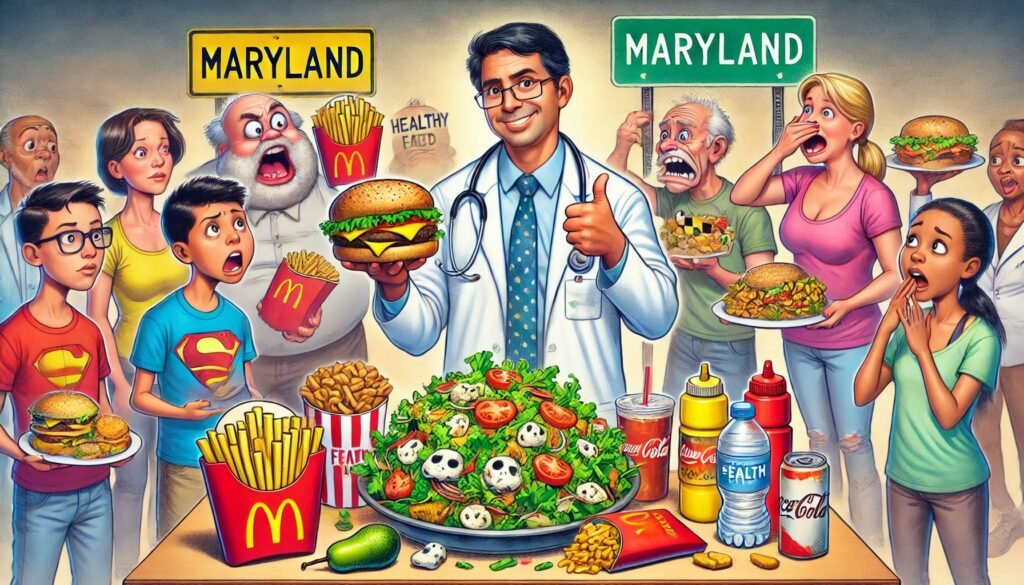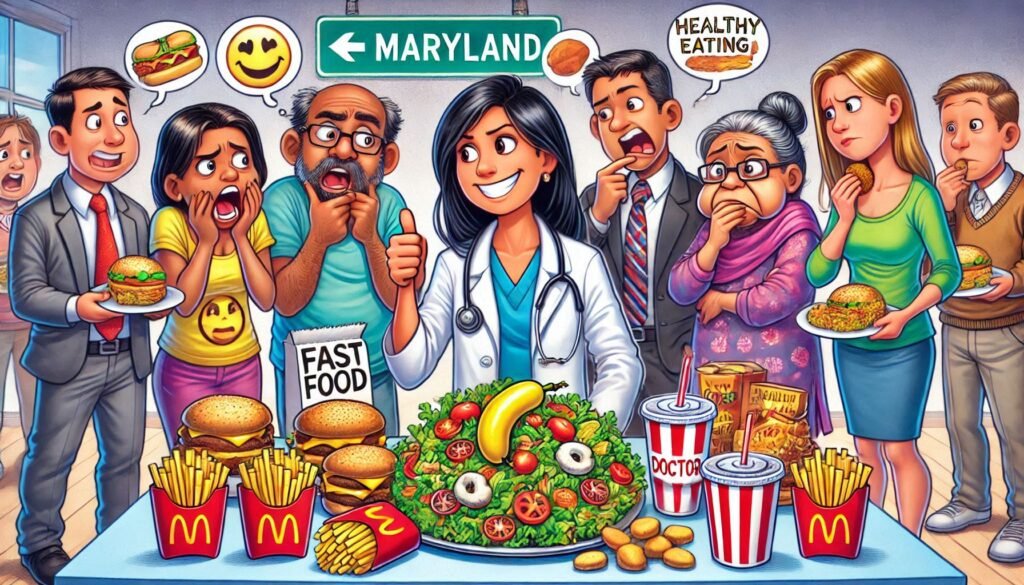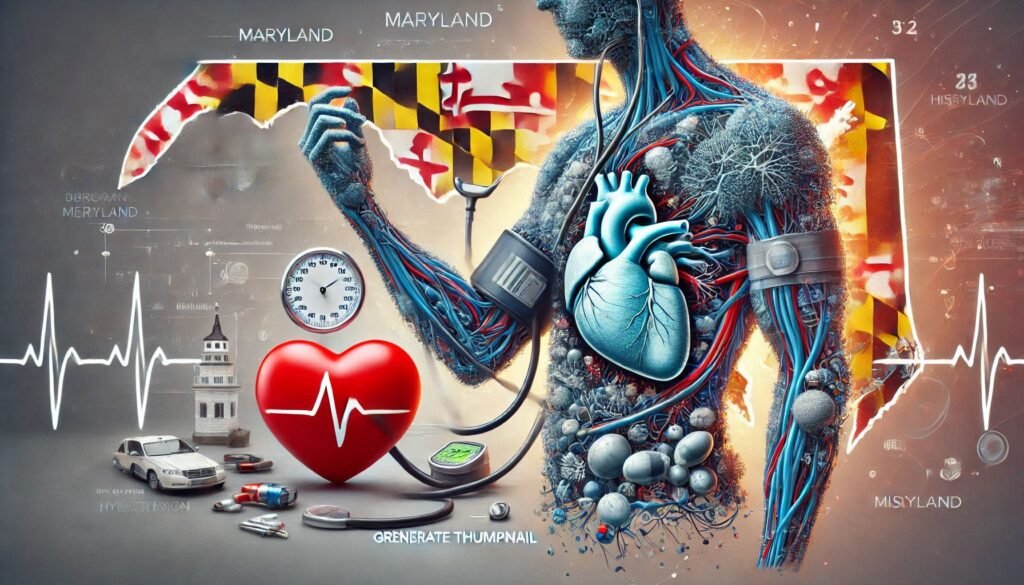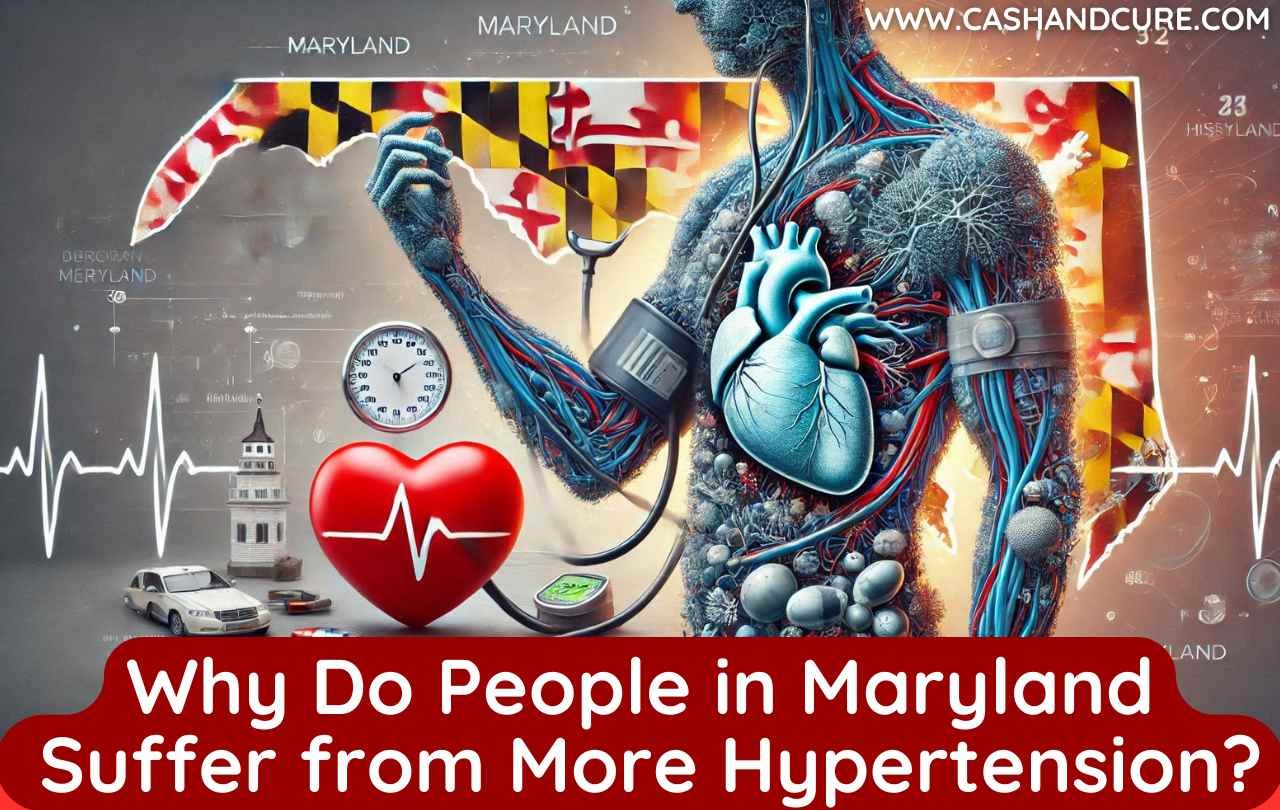Why Do People in Maryland Suffer from More Hypertension? High blood pressure, commonly known as hypertension, has become a growing health concern throughout the United States. Maryland, in particular, reports higher-than-average rates of high blood pressure compared to other states. The condition is a leading cause of serious health problems such as heart disease, stroke, and kidney failure. In this article, we will explore why people in Maryland are more likely to suffer from high blood pressure, analyze all the contributing factors, and discuss ways to deal with it in detail.
Why Do People in Maryland Suffer from More Hypertension?

What is hypertension?
High blood pressure occurs when the force of blood pushing against artery walls is consistently too high. It is measured in two numbers: 1. systolic (pressure during a heartbeat) and 2. diastolic (pressure between beats). A reading of 130/80 mmHg or higher is considered high blood pressure.
| Category | Systolic (mm Hg) | Diastolic (mm Hg) |
|---|---|---|
| Normal | Less than 120 | Less than 80 |
| Elevated | 120-129 | Less than 80 |
| Hypertension Stage 1 | 130-139 | 80-89 |
| Hypertension Stage 2 | 140 or higher | 90 or higher |
| Hypertensive Crisis | Higher than 180 | Higher than 120 |
High blood pressure often goes unnoticed due to its lack of symptoms, which is why it is called the “silent killer.” Without regular screening, high blood pressure leads to serious complications over time.
Maryland High Blood Pressure Statistics
Studies show that approximately 35% of Maryland’s adult population suffers from high blood pressure, higher than the national average of 32%. Additionally, a disproportionate number of cases occur among minority communities, particularly African Americans, who face a higher genetic predisposition to the condition.

Factors Contributing to Hypertension in Maryland
Several factors contribute to the elevated rates of hypertension in Maryland. These include genetics, lifestyle habits, environmental conditions, and healthcare access disparities.
1. Genetic Predisposition
Maryland has a significant African American population, and research shows that African Americans are more likely to develop hypertension at an earlier age. Genetic factors, including increased sensitivity to sodium, play a crucial role in this demographic.
2. Diet and Sodium Intake
- Maryland’s culinary culture, influenced by its coastal location, features seafood-based dishes often high in salt, such as crab cakes and Old Bay-seasoned dishes.
- Excessive sodium consumption increases blood pressure by retaining fluid in the body, creating additional pressure on blood vessels.
3. Obesity and Sedentary Lifestyles
- Health authorities classify approximately 30% of Maryland. Obesity increases the workload on the heart, raising blood pressure levels.
- Many residents report sedentary lifestyles due to long commutes in metropolitan areas like Baltimore and Washington, D.C.
4. Stress and Urbanization
- Stress levels in Maryland residents are elevated due to urban living, high costs of living, and job-related pressures. Chronic stress triggers hormonal imbalances that contribute to hypertension.
- Traffic congestion in cities like Baltimore adds to daily stress, impacting heart health over time.
5. Healthcare Disparities
- Access to healthcare is unequal across Maryland. Rural areas face shortages of medical facilities and healthcare professionals, leading to undiagnosed or poorly managed hypertension.
- Minority groups in underserved communities encounter barriers such as lack of insurance and culturally sensitive healthcare.
6. Environmental Factors
- Air pollution in Maryland’s urban areas has been linked to higher risks of cardiovascular diseases, including hypertension.
- Limited green spaces and recreational areas in densely populated regions restrict physical activity opportunities.

Strategies to Address Hypertension in Maryland
Reducing hypertension rates requires a multi-pronged approach involving individual, community, and state-level interventions. Below are strategies to tackle this health crisis:
1. Promoting a Healthy Diet
- Encourage diets low in sodium and rich in fruits, vegetables, and whole grains.
- Educate residents about healthier cooking alternatives and provide access to affordable, fresh produce.
2. Increasing Physical Activity
- Invest in community programs that promote physical activity, such as free fitness classes or walking groups.
- Expand access to parks and recreational facilities in underserved areas.
3. Stress Management Programs
- Offer stress-relief initiatives like mindfulness workshops and mental health counseling.
- Employers can integrate wellness programs to address work-related stress.
4. Improving Healthcare Access
- Enhance telehealth services to reach rural populations.
- Provide affordable healthcare plans to reduce disparities in medical access.
- Increase funding for hypertension awareness campaigns, especially targeting minority communities.
5. Environmental Improvements
- Reduce air pollution levels through stricter environmental regulations.
- Design urban spaces with more greenery to encourage physical activity and stress reduction.
FAQs About Hypertension in Maryland
Hypertension rates in Maryland are influenced by factors such as high sodium diets, urban stress, healthcare access disparities, and a significant population with genetic predispositions.
Maryland’s cuisine, which often features salty seafood dishes, contributes to higher sodium intake, a leading factor in elevated blood pressure levels.
Residents can adopt a healthy diet, engage in regular physical activity, manage stress, and seek regular medical checkups to monitor blood pressure levels.
Rural areas in Maryland face shortages of medical professionals and facilities, while underserved communities encounter barriers such as lack of insurance and cultural obstacles to healthcare access.
Yes, urban air pollution and limited green spaces in Maryland’s cities contribute to the higher prevalence of hypertension.


Leave a Reply
You must be logged in to post a comment.